ePostcard #15: Watching Lions at Sunset (Etosha National Park, Namibia)
The sublime joy of spending a sunset evening watching a pride of African lions is a profound gift. These kinds of opportunities are usually only possible in parks and preserves where both predators and prey are habituated to having people observe them from vehicles, wildlife blinds or in designated areas located at a considerable distance from where animals predictably gather at sources of water. Much like the social distancing advised during the COVID-19 pandemic, playing by the rules and being patient offers multiple rewards.
Water sources on the Okondeka salt-pan are a magnet for life at both dawn and dusk, and this magical setting is host to its own resident pride of lions. On this particular evening the shimmering heat that transforms the pan by day had crystalized into a wash of golden light. A typical pride of lions consists of a group of closely related lionesses and their cubs, and a group of young males that may be related to each other, but are not close family of the lionesses. The lionesses are the stable element of the pride, while the males change every few years. Hunting is mainly carried out by the females, who usually focus their attacks on medium to large ungulates as prey. A lioness gives birth away from the pride and may move the cubs around for 6-8 weeks before rejoining her pride. All lactating lionesses in a pride will suckle each others’ cubs, which are weaned at about 6 months. Female cubs stay with the pride for life, while males disperse or are expelled between the ages of 2 and 3.
Play among cubs and among cubs and adults, as you see here, is an important part of learning how to hunt. It also enhances social cohesion among members of the pride, giving cubs a subtle way of establishing the pecking order in the pride. Cubs spend a great deal of time stalking each other, play-fighting, and mounting mock-attacks, building their adult skillset for hunting their own prey. It is difficult for me not to ascribe feelings to animals when I observe intimate interactions similar to our own. For a more profound perspective on this subject, I recommend reading or listening to Carl Safina’s excellent book “Beyond Words: What Animals Think and Feel” (2015, Henry Holt & Co. New York, NY). Trust your intuition.
To help build global awareness, we would appreciate it if you would share this post with your friends and colleagues. Please choose one of the options below which includes email and print! Thank you.

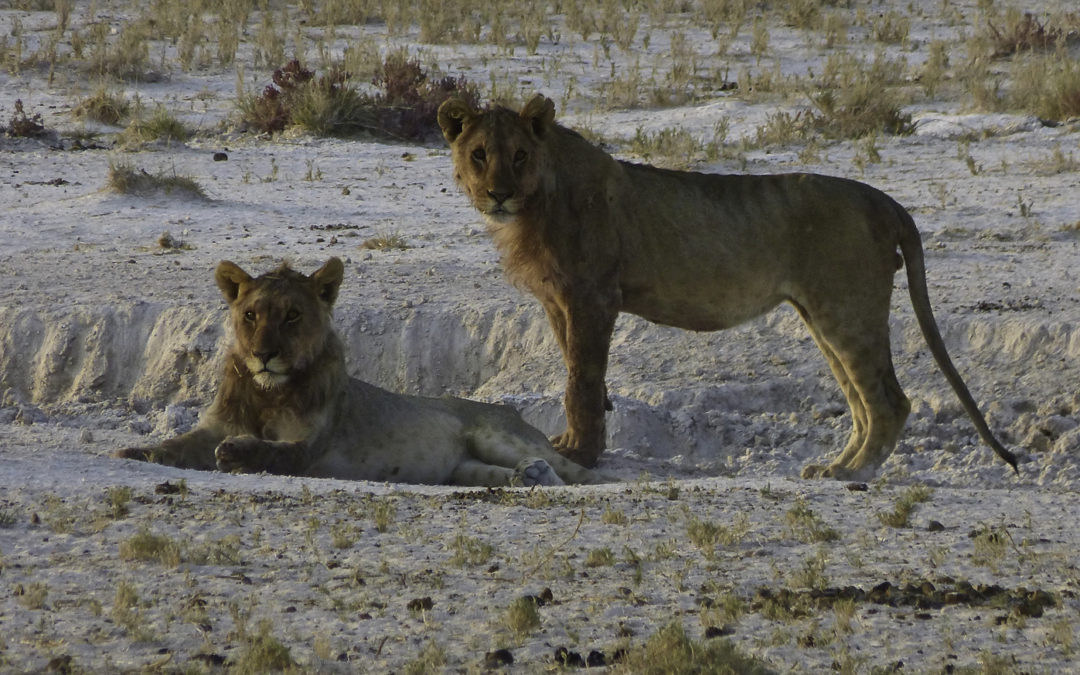
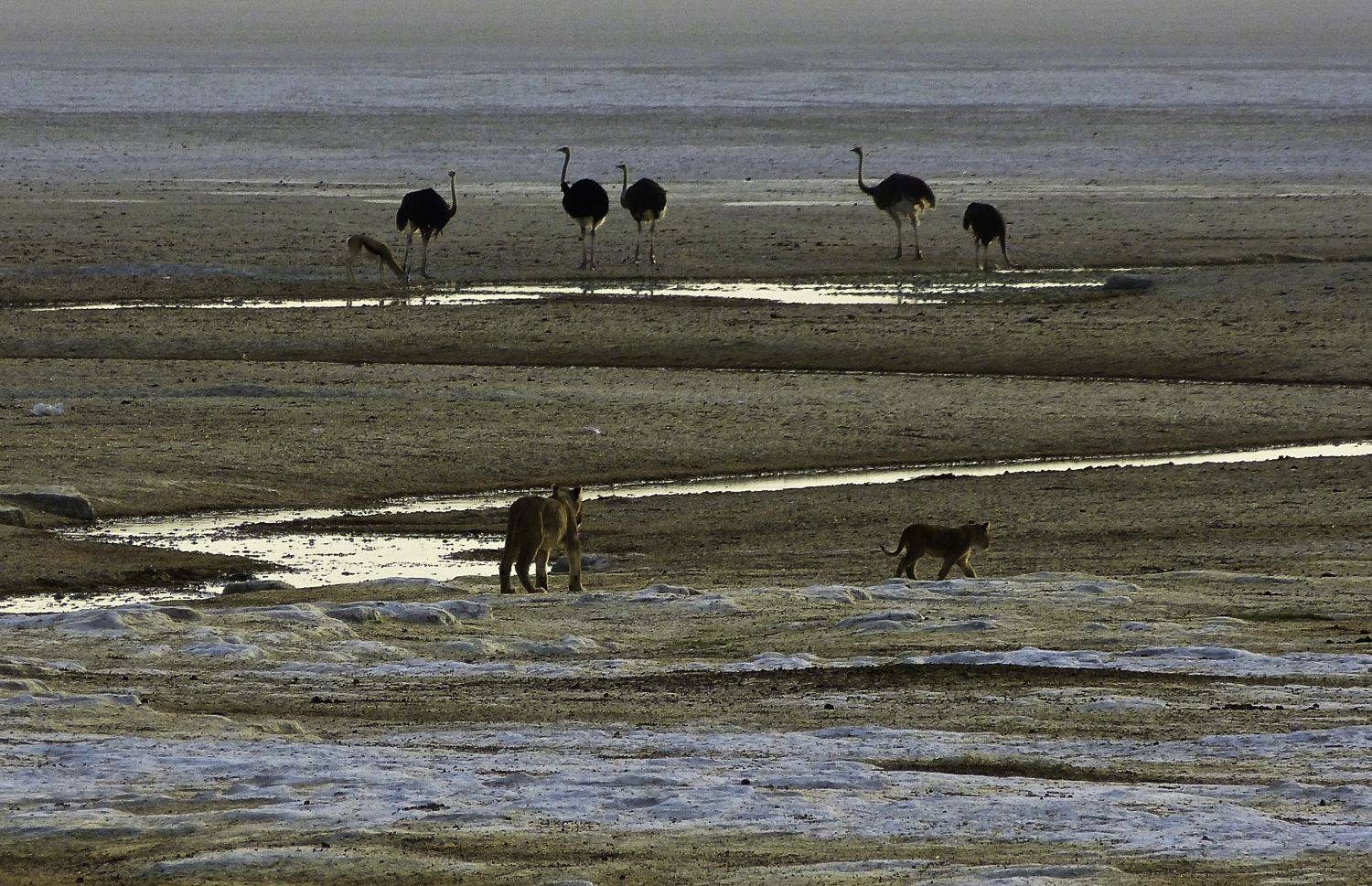
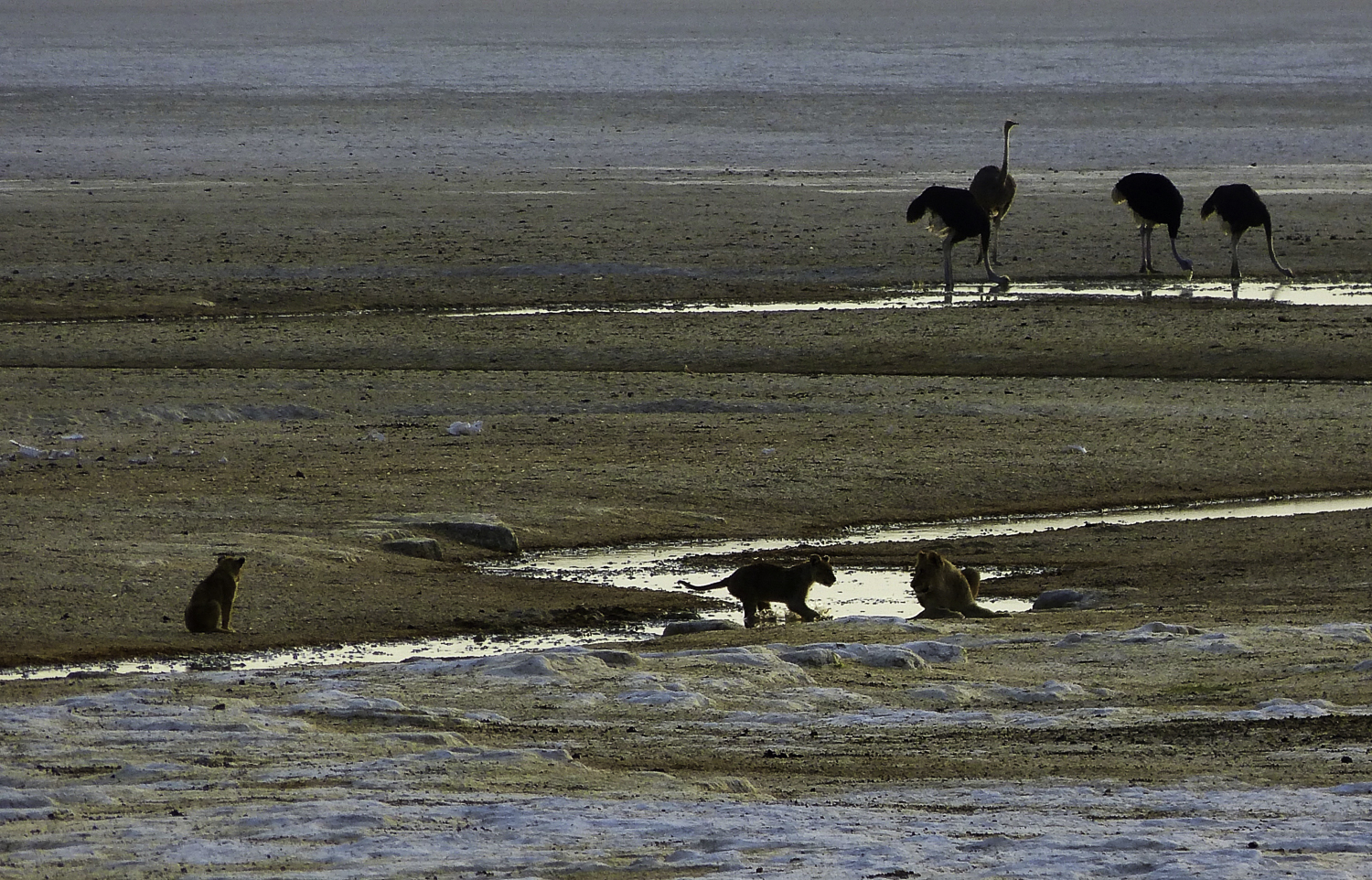
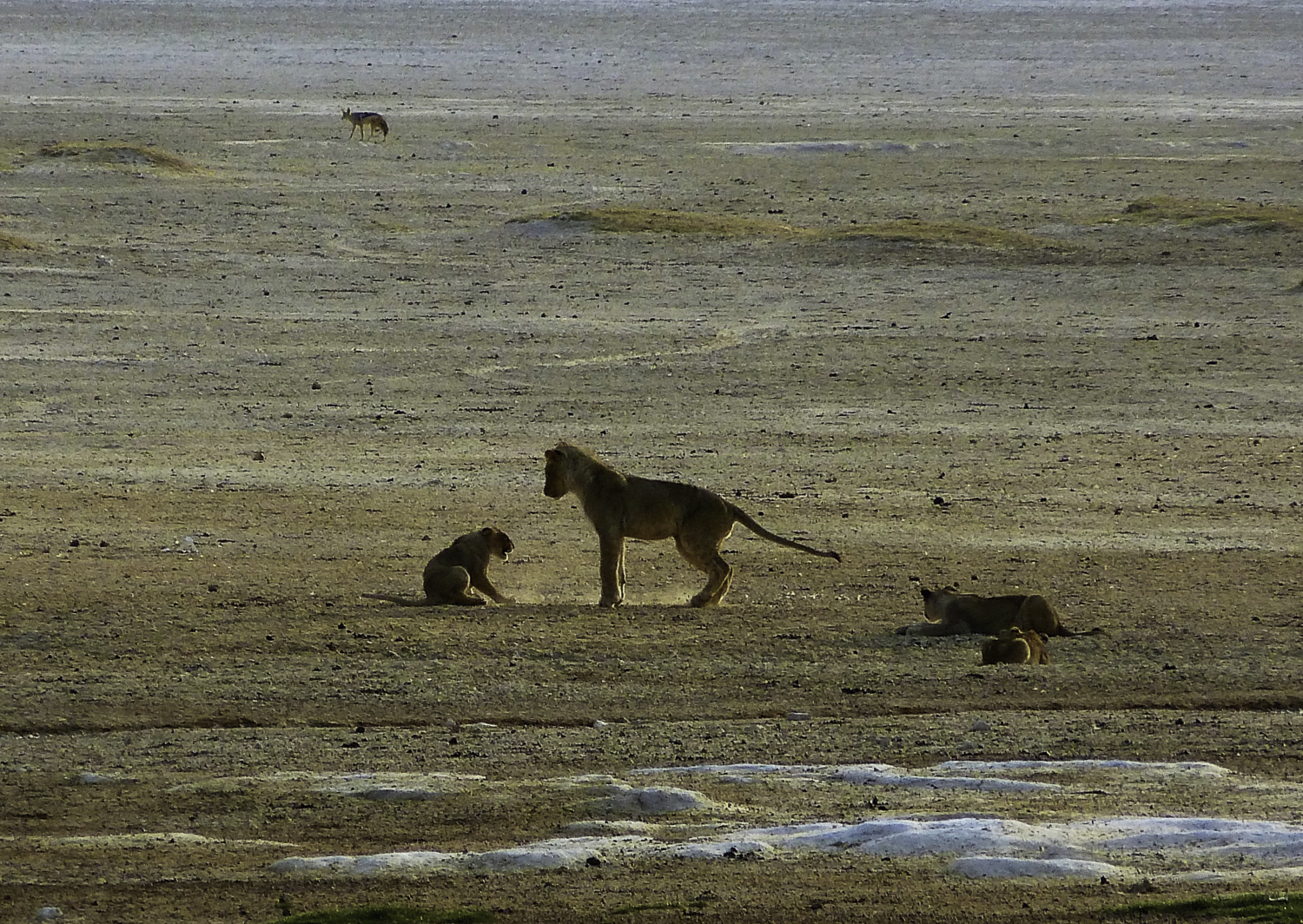
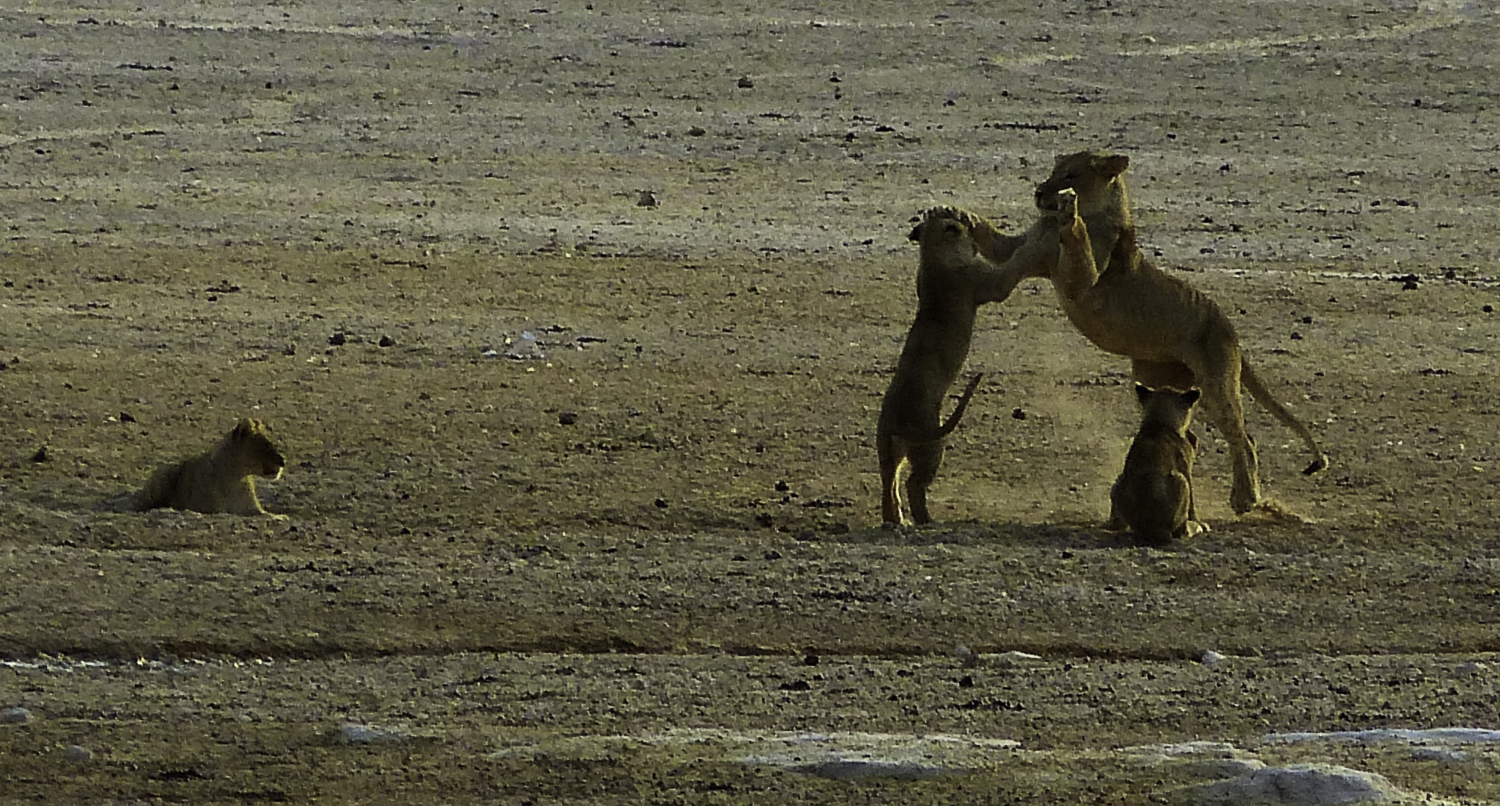
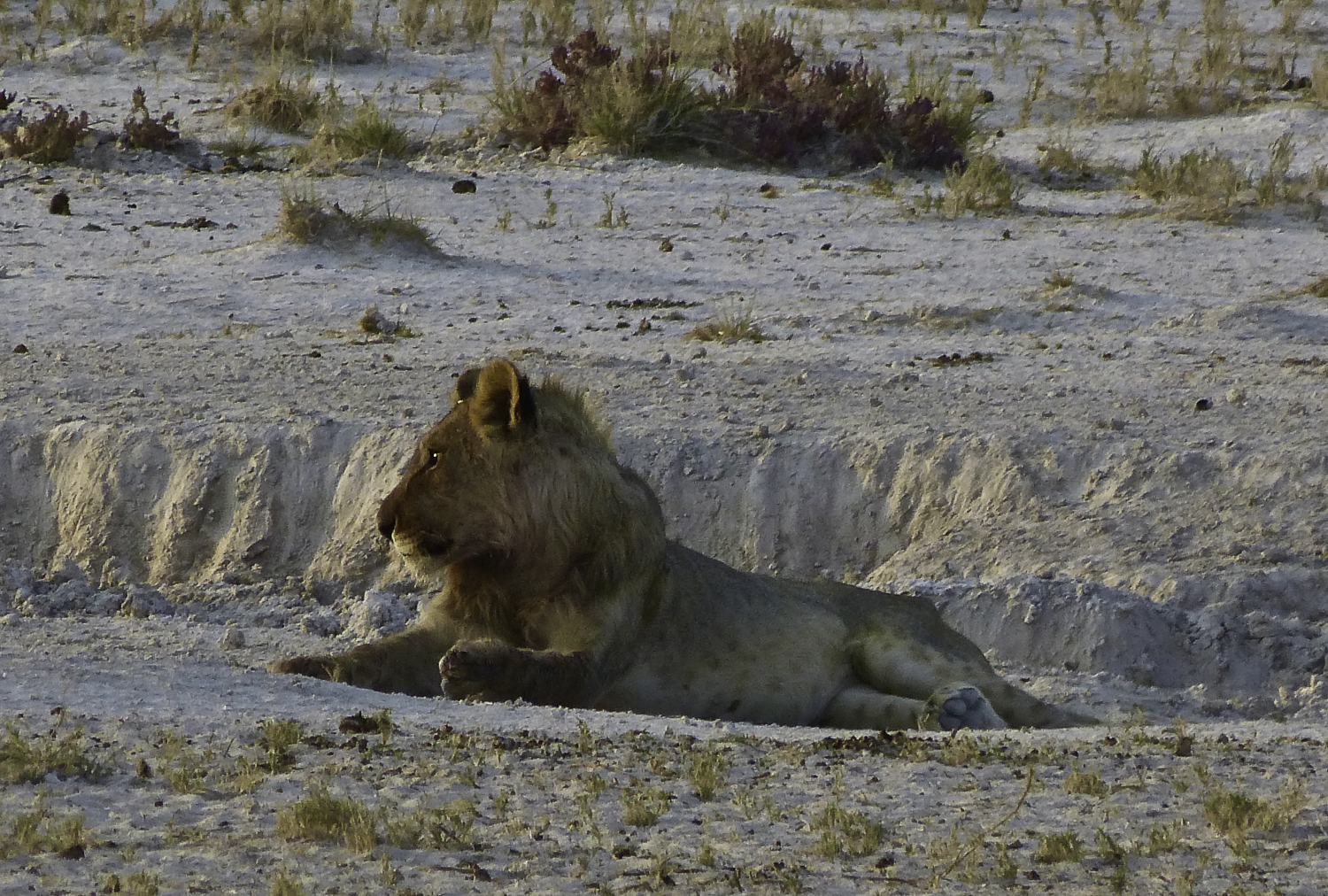
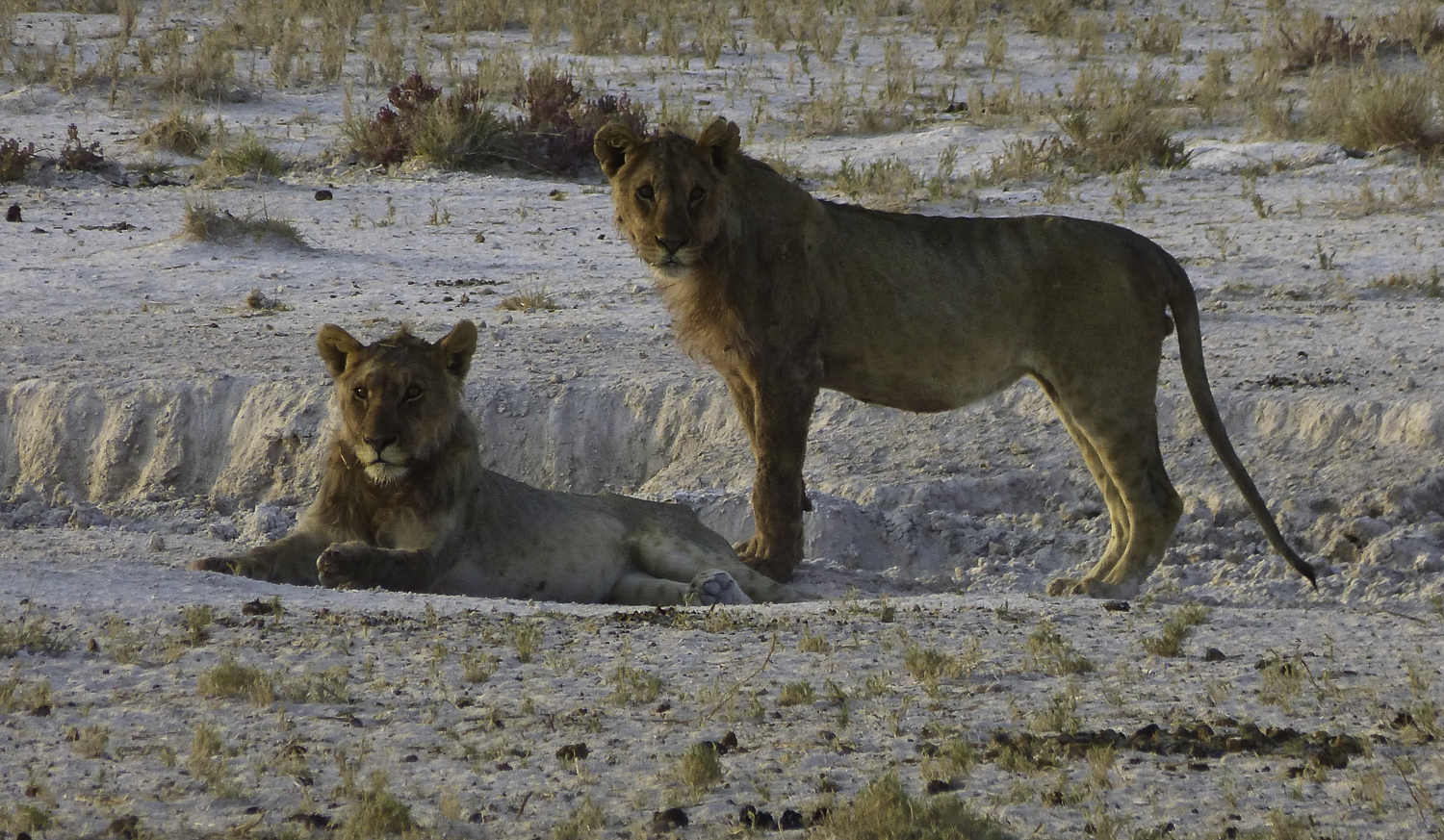
Thank you, Audrey, for all your great lion images in the current e-postcard! Seeing those reminded me of being at the very same Okondeka Waterhole (location -18.9943, 15.8664) in 1993 and 1995, also filming lions! What a magical place, on the west edge of the Etosha Pan, near the Kashondeka spring. I recall staying at the lovely camps at Okaukuejo, Halali and Namutoni, and the long hours of photography at the many favorite waterholes in the park. Etosha is one of my favorite locations on earth! Thank you for your splendid commentary and images.
Daniel and Ginger Poleschook
I’ve appreciated all of your very kind comments! What wonderful life adventures we’ve all experienced with our travels! I certainly hope we get to travel together at some point in the future. Perhaps a joint project? I’ve just finished ePostcard #16 (Sunbirds) and anticipate two more before I must leave Africa behind me.
Keep them coming Audrey.
Such a lovely travel back in time to Etosha.
The lion picture series have so wonderfully captured their behavior and their family lives. Thank you